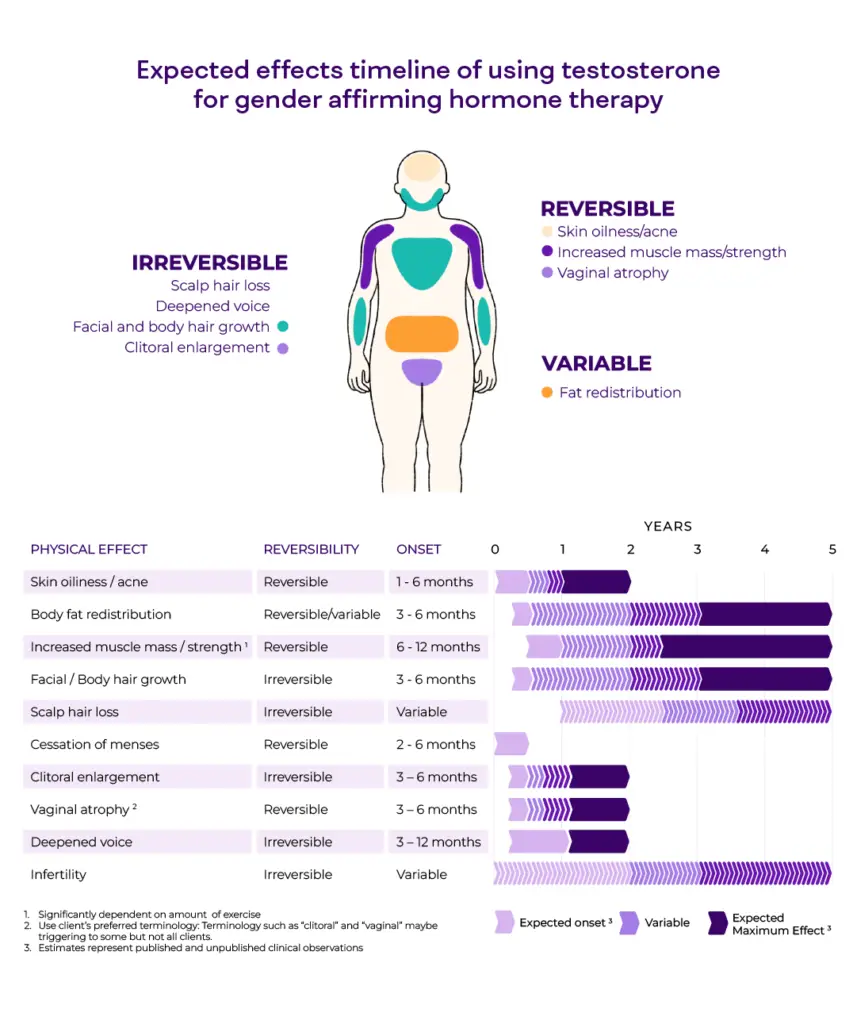Are hormones right for me? You may ask yourself this question at some point along your gender journey. It’s normal to feel uncertain about what’s right for you and asking questions about medical transitioning is part of the process for many folks. Within gender-affirming hormone therapy (GAHT), there’s a method called microdosing that offers a tailored approach worth considering. Here, we’ll delve into the world of microdosing and its potential role in your gender journey. We’re here to support you while you discover what works best for your body, mind, and heart.
Table of Contents
Understanding microdosing
Gender-affirming hormone therapy (GAHT, sometimes referred to as hormone replacement therapy or HRT) can play an essential role in easing the experience of gender dysphoria. Some commonly prescribed forms of HRT include estrogen, testosterone, progesterone, T-blockers, and other medications. GAHT can be a vital aspect of many individuals’ transitions, helping to align their physical characteristics and embodied experiences with their gender identity.
Microdosing is one way trans and nonbinary individuals gradually explore the effects of hormones. By taking smaller doses of estrogen or testosterone, individuals can experience more subtle changes over time. This approach is particularly beneficial for those seeking a gradual transition or wishing to have more control over the effects of hormones on their appearance and endocrine system.
Benefits of microdosing
Research indicates that gender-affirming hormone therapy has significant positive effects on the mental health of trans and nonbinary individuals. For many, microdosing provides a way to bridge the gap between physical characteristics and gender identity without inducing more marked, culturally binary features. It offers flexibility in tailoring one’s transition to align with a fluid or evolving gender identity.
Drawbacks of microdosing
While microdosing allows for a more gradual transition and greater control over hormone effects, it may not be suitable for everyone. Some individuals may seek more immediate relief from gender dysphoria or desire the full expression of hormones. It’s essential to work closely with a medical provider to determine the most appropriate dosage and treatment plan based on individual goals and needs.
Microdosing estrogen: what to expect
Microdosing estrogen involves starting at a lower dose and gradually increasing it over time. This approach is common for those seeking less extreme changes or who are not yet ready for more drastic physical changes. It can result in softer skin, budding breasts, fat redistribution, and other subtle changes, providing a more gradual transition for some individuals.
While the timeline of expected changes when microdosing estrogen varies per person, the following chart is a typical timeline of changes when taking a standard dose of estrogen for GAHT.

Microdosing testosterone: understanding the effects
Microdosing testosterone can lead to subtle changes in body composition, including increased muscle density and fat redistribution. It may also affect voice pitch and bottom growth, albeit more gradually than in higher doses. Like microdosing estrogen, this approach offers individuals greater control over their transition process.
While the timeline of expected changes after microdosing testosterone varies per person, the following chart shows a typical timeline of changes when taking a standard dose of estrogen for GAHT.

Whether you’re considering microdosing hormones or pursuing a larger dose of gender-affirming therapy, it’s essential to work closely with a knowledgeable medical provider. Your transition journey is unique, and your treatment plan should reflect your individual goals and needs. At Plume, we’re here to provide support and guidance every step of the way, ensuring that your transition is safe, affirming, and tailored to your needs.
*Credit: GAHT effects timeline made by a queer medical illustrator, Katja Tetzlaff, with information sourced by Rainbow Health Ontario



